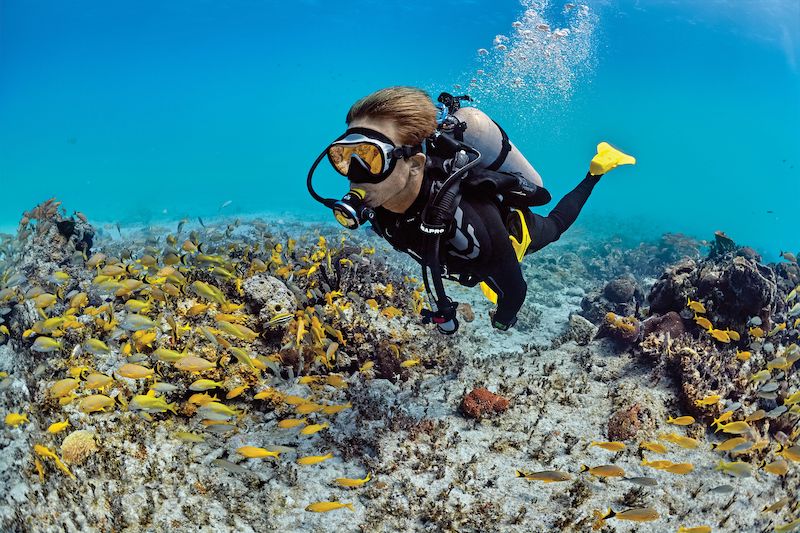The Red Sea: A Haven of Natural Beauty and Historical Significance
The Red Sea, with its mesmerizing azure waters and vibrant marine life, is a natural wonder that has fascinated people for centuries. Located between northeastern Africa and the Arabian Peninsula, this sea is not only a stunning natural feature but also a site of immense historical, cultural, and ecological importance. In this comprehensive overview, we will delve into the geography, history, marine life, and cultural significance of the Red Sea.
Geography and Physical Features
The Red Sea is an elongated inlet of the Indian Ocean, stretching approximately 2,250 kilometers (1,400 miles) in length and about 355 kilometers (220 miles) at its widest point. It is bordered by several countries, including Egypt, Sudan, Eritrea, Djibouti, Saudi Arabia, and Yemen. The sea is connected to the Indian Ocean in the south through the Bab el Mandeb Strait and the Gulf of Aden, and in the north, it meets the Mediterranean Sea via the Suez Canal.
One of the most remarkable features of the Red Sea is its extensive coral reef system. The reefs, which stretch along the coastline, are among the oldest and most diverse in the world. They provide a habitat for a wide variety of marine species and are renowned for their stunning beauty. The Red Sea’s waters are exceptionally clear, with visibility often exceeding 30 meters (100 feet), making it a paradise for divers and snorkelers.
The Red Sea is also known for its unique geological characteristics. It is situated on the boundary between the African and Arabian tectonic plates, and the region is part of the Great Rift Valley. This tectonic activity has created a series of underwater ridges, valleys, and trenches that add to the sea’s diverse topography. The sea reaches its greatest depth of about 2,211 meters (7,254 feet) in the central part of the basin.
Historical Significance
The Red Sea has been a vital maritime route for thousands of years. Its strategic location made it a key corridor for trade and cultural exchange between the ancient civilizations of Egypt, Mesopotamia, the Levant, and the Arabian Peninsula. The sea played a crucial role in the development of maritime navigation and commerce.
One of the earliest recorded references to the Red Sea dates back to ancient Egyptian times. The Egyptians used the Red Sea as a route for expeditions to the land of Punt, a region rich in exotic goods such as incense, myrrh, and gold. These voyages, which took place around 2000 BCE, are depicted in the reliefs of the temple of Queen Hatshepsut at Deir el-Bahri.
The Red Sea also features prominently in biblical history. According to the Book of Exodus, the Israelites crossed the Red Sea during their escape from Egypt, a miraculous event that is commemorated in the Jewish and Christian traditions.
In the Middle Ages, the Red Sea remained a crucial link in the spice trade between Asia and Europe. Arab and Persian traders navigated its waters, establishing trade routes that connected the Indian Ocean to the Mediterranean. The sea’s significance continued into the modern era with the construction of the Suez Canal in 1869, which provided a direct maritime route between Europe and Asia.
Marine Life and Biodiversity
The Red Sea is a biodiversity hotspot, home to an extraordinary array of marine life. Its coral reefs support over 1,200 species of fish, many of which are endemic to the region. The reefs are inhabited by colorful fish such as butterflyfish, angelfish, and clownfish, as well as larger species like barracudas, groupers, and sharks.
One of the most iconic residents of the Red Sea is the dugong, a marine mammal closely related to the manatee. Dugongs are often found grazing on seagrass beds in the shallow coastal waters. The Red Sea is also a critical habitat for several species of sea turtles, including the endangered green turtle and the hawksbill turtle.
In addition to its fish and coral, the Red Sea is home to numerous invertebrates, such as sponges, sea anemones, and crustaceans. The sea’s unique environmental conditions have led to the evolution of specialized species that are adapted to its warm, saline waters.
Environmental Challenges and Conservation Efforts
Despite its natural beauty and biodiversity, the Red Sea faces several environmental challenges. The rapid growth of tourism, coastal development, and maritime traffic has put pressure on the fragile marine ecosystem. Pollution, overfishing, and habitat destruction are significant threats to the health of the coral reefs and the species that depend on them.
Efforts to protect and conserve the Red Sea’s marine environment are underway. Various national and international organizations are working to promote sustainable tourism and responsible diving practices. Marine protected areas, such as the Ras Mohammed National Park in Egypt and the Farasan Islands Marine Protected Area in Saudi Arabia, have been established to safeguard critical habitats and biodiversity.
Research and monitoring programs are also being conducted to better understand the impacts of climate change on the Red Sea. Rising sea temperatures and ocean acidification pose long-term threats to the coral reefs, and scientists are studying ways to enhance the resilience of these ecosystems.
Cultural and Economic Significance
The Red Sea has a rich cultural heritage that is reflected in the traditions and lifestyles of the people who live along its shores. The coastal communities have a deep connection to the sea, relying on it for their livelihoods through fishing, pearl diving, and trade. Traditional wooden dhows, or sailing vessels, are still used by fishermen in some areas.
Tourism is a major economic driver for the countries bordering the Red Sea. The region’s natural attractions, including its coral reefs, beaches, and historical sites, draw millions of visitors each year. Popular tourist destinations like Sharm El Sheikh, Hurghada, and Aqaba offer a range of activities, from diving and snorkeling to desert safaris and cultural tours.
The Red Sea is also strategically important for global shipping and trade. The Suez Canal, which connects the Red Sea to the Mediterranean, is one of the world’s most important maritime routes. It facilitates the movement of goods between Europe and Asia, significantly reducing travel time and shipping costs.
Conclusion
In conclusion, the Red Sea is a remarkable body of water that holds immense natural, historical, and cultural significance. Its stunning coral reefs, diverse marine life, and strategic location have made it a focal point for exploration, trade, and tourism throughout history. While the Red Sea faces environmental challenges, ongoing conservation efforts aim to preserve its unique ecosystems for future generations.
Whether you are an adventurer seeking underwater wonders, a history enthusiast interested in ancient trade routes, or a traveler looking for a picturesque getaway, the Red Sea offers a wealth of experiences and discoveries. It is a testament to the enduring beauty and resilience of our planet’s natural treasures.
I hope you enjoyed this exploration of the Red Sea! Let me know if there’s anything specific you’d like to delve into further.



